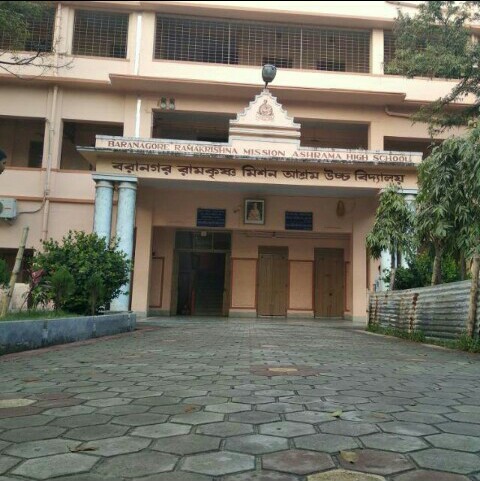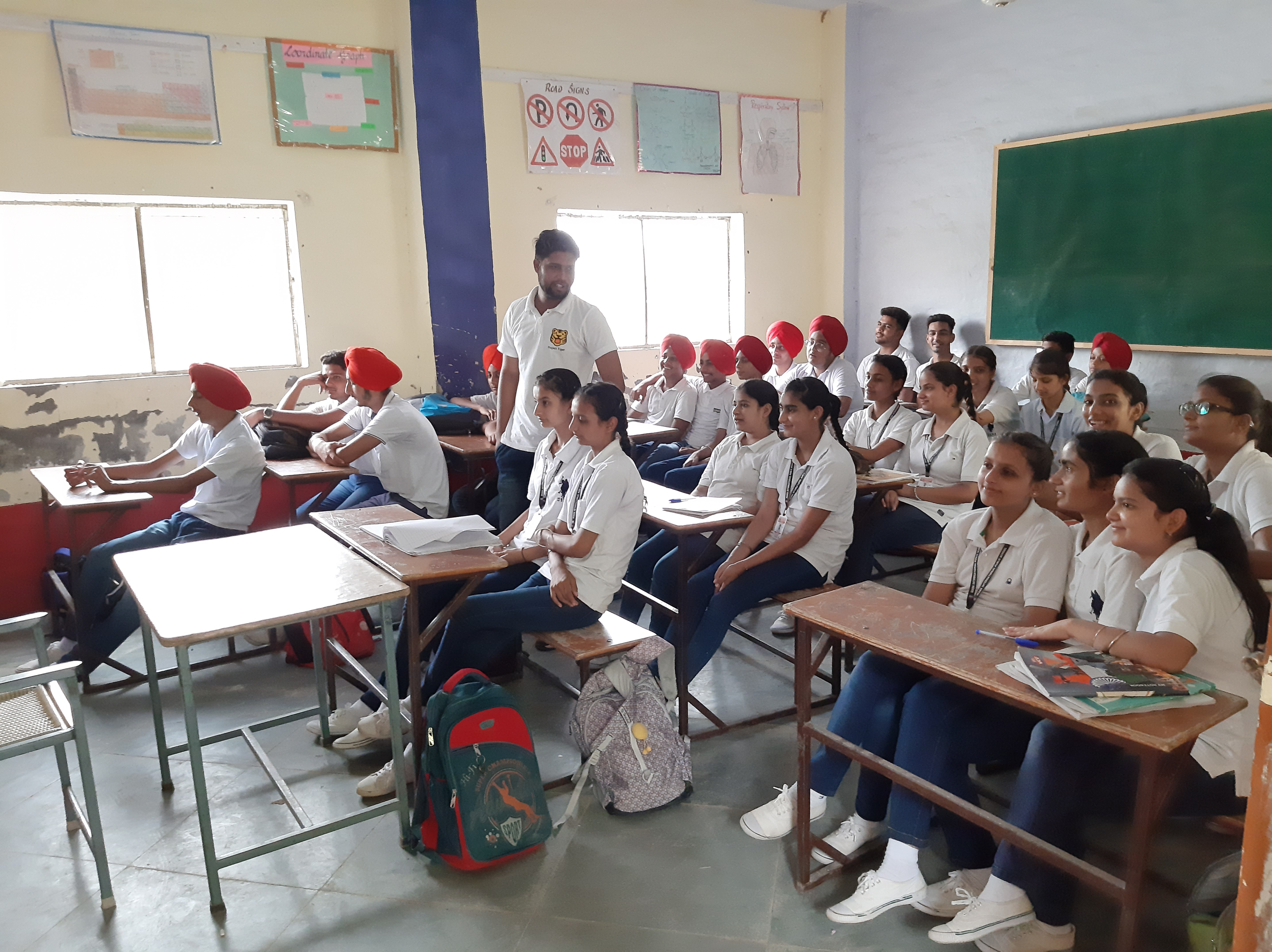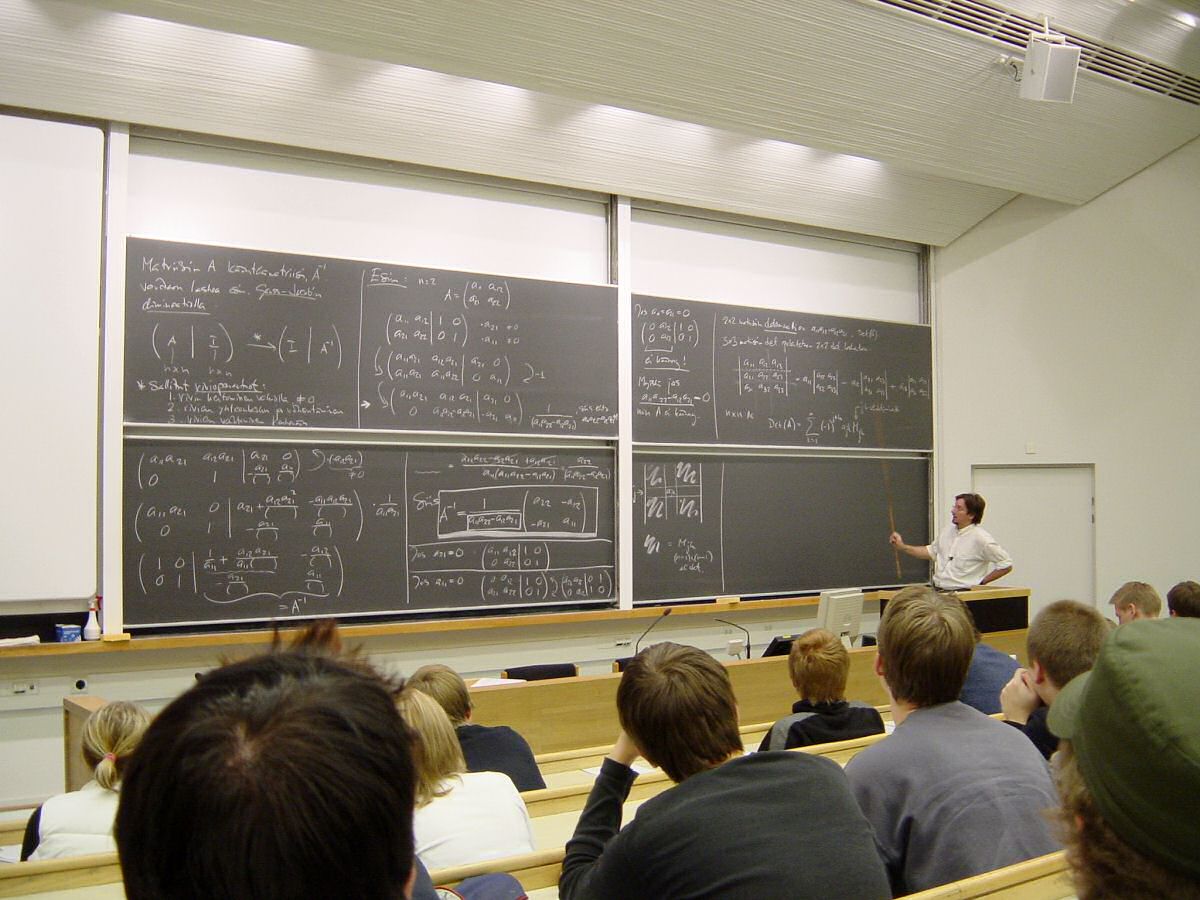|
Sitananda College
Sitananda College, also known as Nandigram College, established in 1960, is a general degree college in Nandigram, Purba Medinipur. It offers undergraduate courses in arts and sciences. It is affiliated with Vidyasagar University. History The college was founded on July 21, 1960, initially affiliated with Calcutta University; after 1985, affiliated with Vidyasagar University. The name 'SITANANDA' was derived from the initials of two principal donors, Sitanath Pal and Ananda Mohan Maity. The college began with Arts and Science faculties, and progressively broadened its academic spectrum. In 1966, it introduced Bengali Honours, followed by Mathematics and Political Science in 1970. The institution later incorporated Honours courses in Anthropology, Zoology, History, English, Sanskrit, alongside General Courses spanning Education, and Philosophy. Its Anthropology Department, established at inception, was the second undergraduate department of its kind in West Bengal. Education a ... [...More Info...] [...Related Items...] OR: [Wikipedia] [Google] [Baidu] |
Nandigram
Nandigram is a census town in the Nandigram I Community development block, Community Development Block of the Haldia subdivision in the Purba Medinipur district of the India, Indian state of West Bengal. In 2007, the West Bengal government allowed the Salim Group to set up a chemical hub at Nandigram under the special economic zone policy. This led to resistance by the villagers resulting in clashes with the police that left 14 villagers dead, and resulted in accusations of police brutality. Geography Police station Nandigram's police station has jurisdiction over the Nandigram I and Nandigram II Community development block, community development blocks. Nandigram's police station covers an area of 251.25km2 with a population of 279,285. Urbanisation 79.19% of the Haldia subdivision's population lives in rural areas. Only 20.81% of the population lives in urban areas, and that is the highest proportion of urban population among the four subdivisions in the Purba Medinipur di ... [...More Info...] [...Related Items...] OR: [Wikipedia] [Google] [Baidu] |
Sanskrit
Sanskrit (; stem form ; nominal singular , ,) is a classical language belonging to the Indo-Aryan languages, Indo-Aryan branch of the Indo-European languages. It arose in northwest South Asia after its predecessor languages had Trans-cultural diffusion, diffused there from the northwest in the late Bronze Age#South Asia, Bronze Age. Sanskrit is the sacred language of Hinduism, the language of classical Hindu philosophy, and of historical texts of Buddhism and Jainism. It was a lingua franca, link language in ancient and medieval South Asia, and upon transmission of Hindu and Buddhist culture to Southeast Asia, East Asia and Central Asia in the early medieval era, it became a language of religion and high culture, and of the political elites in some of these regions. As a result, Sanskrit had a lasting effect on the languages of South Asia, Southeast Asia and East Asia, especially in their formal and learned vocabularies. Sanskrit generally connotes several Indo-Aryan languages# ... [...More Info...] [...Related Items...] OR: [Wikipedia] [Google] [Baidu] |
Universities And Colleges Established In 1960
A university () is an institution of tertiary education and research which awards academic degrees in several academic disciplines. ''University'' is derived from the Latin phrase , which roughly means "community of teachers and scholars". Universities typically offer both undergraduate and postgraduate programs. The first universities in Europe were established by Catholic monks. The University of Bologna (), Italy, which was founded in 1088, is the first university in the sense of: *being a high degree-awarding institute. *using the word (which was coined at its foundation). *having independence from the ecclesiastic schools and issuing secular as well as non-secular degrees (with teaching conducted by both clergy and non-clergy): grammar, rhetoric, logic, theology, canon law and notarial law.Hunt Janin: "The university in medieval life, 1179–1499", McFarland, 2008, , p. 55f.de Ridder-Symoens, Hilde''A History of the University in Europe: Volume 1, Universities in the Middl ... [...More Info...] [...Related Items...] OR: [Wikipedia] [Google] [Baidu] |
Colleges Affiliated To Vidyasagar University
A college (Latin: ''collegium'') may be a tertiary educational institution (sometimes awarding degrees), part of a collegiate university, an institution offering vocational education, a further education institution, or a secondary school. In most of the world, a college may be a high school or secondary school, a college of further education, a training institution that awards trade qualifications, a higher-education provider that does not have university status (often without its own degree-awarding powers), or a constituent part of a university. In the United States, a college may offer undergraduate programs – either as an independent institution or as the undergraduate program of a university – or it may be a residential college of a university or a community college, referring to (primarily public) higher education institutions that aim to provide affordable and accessible education, usually limited to two-year associate degrees. The word "college" is generally ... [...More Info...] [...Related Items...] OR: [Wikipedia] [Google] [Baidu] |
Education In West Bengal
Education in West Bengal is provided by both the public sector as well as the private sector. Health Sciences, University of North Bengal and University of Calcutta. History Kolkata has played a pioneering role in the development of the modern education system in India. Western models of education came to India through Kolkata. Many of the first schools and colleges were established by the missionaries and reformists. Sir William Jones (philologist) established the Asiatic Society in 1784 for promoting oriental studies. People like Ram Mohan Roy, David Hare, Ishwar Chandra Vidyasagar, Shashi Bhusan Chatterjee, Maharshi Nagendranath - Bhaduri Mahasaya and William Carey played a leading role in the setting up of modern schools and colleges in the city. The Fort William College was established in 1800. The Hindu College was established in 1817. In 1855, the Hindu College, Calcutta was renamed as the Presidency College. William Carey established the Serampore College in S ... [...More Info...] [...Related Items...] OR: [Wikipedia] [Google] [Baidu] |
Education In India
Education in India is primarily managed by the state-run public education system, which falls under the command of the government at three levels: Government of India, central, States and Territories of India, state and Local government in India, local. Under various articles of the Indian Constitution and the Right of Children to Free and Compulsory Education Act, 2009, free and compulsory education is provided as a Fundamental Rights, Directive Principles and Fundamental Duties of India#Fundamental Rights, fundamental right to Children and adolescents in India, children aged 6 to 14. The approximate ratio of the total number of public schools to private schools in India is 10:3. Education in India covers different levels and types of learning, such as early childhood education, primary education, secondary education, higher education, and vocational education. It varies significantly according to Caste#Caste and higher education, different factors, such as location (urban o ... [...More Info...] [...Related Items...] OR: [Wikipedia] [Google] [Baidu] |
List Of Institutions Of Higher Education In West Bengal
Tertiary education (higher education, or post-secondary education) is the educational level following the completion of secondary education. The World Bank defines tertiary education as including universities, colleges, and vocational schools. ''Higher education'' is taken to include undergraduate and postgraduate education, while vocational education beyond secondary education is known as ''further education'' in the United Kingdom, or included under the category of ''continuing education'' in the United States. Tertiary education generally culminates in the receipt of certificates, diplomas, or academic degrees. Higher education represents levels 5, 6, 7, and 8 of the 2011 version of the International Standard Classification of Education structure. Tertiary education at a nondegree level is sometimes referred to as further education or continuing education as distinct from higher education. UNESCO stated that tertiary education focuses on learning endeavors in specialize ... [...More Info...] [...Related Items...] OR: [Wikipedia] [Google] [Baidu] |
Nandigram Brajamohan Tewary Sikshaniketan
Nandigram Brajamohan Tewary Sikshaniketan, also known as Nandigram BMT Sikshaniketan, is a government-sponsored higher secondary school located in Nandigram, Purba Medinipur, West Bengal, India. The school was established in the year 1912. The school is affiliated to the West Bengal Board of Secondary Education for education till 10th standard, West Bengal Council of Higher Secondary Education for 11th & 12th standard and West Bengal State Council of Technical & Vocational Education and Skill Development for vocational education. History There are two schools in this area, Nandigram BMT Sikshaniketan exclusively for boys till 10th standard and co-ed for 11th and 12th standard and Nandigram BM Girls High School exclusively for girls till 10th standard. But in the year 2015, the High Court of Calcutta passed an order stated that "Nandigram Brajamohan Tewary Sikshaniketan shall be entitled to admit a maximum of 100 students with effect from the current session, if there are will ... [...More Info...] [...Related Items...] OR: [Wikipedia] [Google] [Baidu] |
Sheikh Mohammad Illias
Sheikh Mohammad Illias is an Indian politician belonging to the Communist Party of India (Marxist). He was the MLA of Nandigram Assembly constituency in the West Bengal Legislative Assembly. Early life and family Illias was born on 10 March 1958 to a Bengalis, Bengali family of Muslim Sheikhs of Bengal, Sheikhs in the village of Nandigram I, Samsabad in Midnapore district, West Bengal. He is the son of Sheikh Abdul Jabbar. Illias studied at the Nandigram Brajamohan Tewary Sikshaniketan, Nandigram Braja Mohan Tewary High School and Sitananda College. He holds a Bachelor of Science degree. Career Illias contested in the 2001 West Bengal Legislative Assembly election where he ran as an Indian National Congress candidate for Nandigram Assembly constituency, defeating Trinamool politician Sunil Baran Maiti. Illias was a member of the Standing Committee on Housing and Public Works. He was re-elected in the 2006 West Bengal Legislative Assembly election, defeating Maiti once again. Refe ... [...More Info...] [...Related Items...] OR: [Wikipedia] [Google] [Baidu] |
University Grants Commission (India)
University Grants Commission (UGC; ISO: ''Viśvavidyālaya Anudāna Āyōga'') is a statutory body under Department of Higher Education, Ministry of Education, Government of India. It was set up in accordance to the UGC Act 1956 and is charged with coordination, determination and maintenance of standards of higher education in India. It provides recognition to universities in India, and disbursements of funds to such recognized universities and colleges. The UGC headquarters are in New Delhi, and it has six regional centres in Pune, Bhopal, Kolkata, Hyderabad, Guwahati and Bengaluru. A proposal to replace it with another new regulatory body called HECI is under consideration by the Government of India. The UGC provides doctoral scholarships to all those who clear JRF in the National Eligibility Test. On an average, each year is spent on doctoral and post-doctoral fellowships by the commission. History The UGC was first formed in 1945 to oversee the work of the th ... [...More Info...] [...Related Items...] OR: [Wikipedia] [Google] [Baidu] |
Education
Education is the transmission of knowledge and skills and the development of character traits. Formal education occurs within a structured institutional framework, such as public schools, following a curriculum. Non-formal education also follows a structured approach but occurs outside the formal schooling system, while informal education involves unstructured learning through daily experiences. Formal and non-formal education are categorized into levels, including early childhood education, primary education, secondary education, and tertiary education. Other classifications focus on teaching methods, such as teacher-centered and student-centered education, and on subjects, such as science education, language education, and physical education. Additionally, the term "education" can denote the mental states and qualities of educated individuals and the academic field studying educational phenomena. The precise definition of education is disputed, and there are ... [...More Info...] [...Related Items...] OR: [Wikipedia] [Google] [Baidu] |
Philosophy
Philosophy ('love of wisdom' in Ancient Greek) is a systematic study of general and fundamental questions concerning topics like existence, reason, knowledge, Value (ethics and social sciences), value, mind, and language. It is a rational and critical inquiry that reflects on its methods and assumptions. Historically, many of the individual sciences, such as physics and psychology, formed part of philosophy. However, they are considered separate academic disciplines in the modern sense of the term. Influential traditions in the history of philosophy include Western philosophy, Western, Islamic philosophy, Arabic–Persian, Indian philosophy, Indian, and Chinese philosophy. Western philosophy originated in Ancient Greece and covers a wide area of philosophical subfields. A central topic in Arabic–Persian philosophy is the relation between reason and revelation. Indian philosophy combines the Spirituality, spiritual problem of how to reach Enlightenment in Buddhism, enlighten ... [...More Info...] [...Related Items...] OR: [Wikipedia] [Google] [Baidu] |







